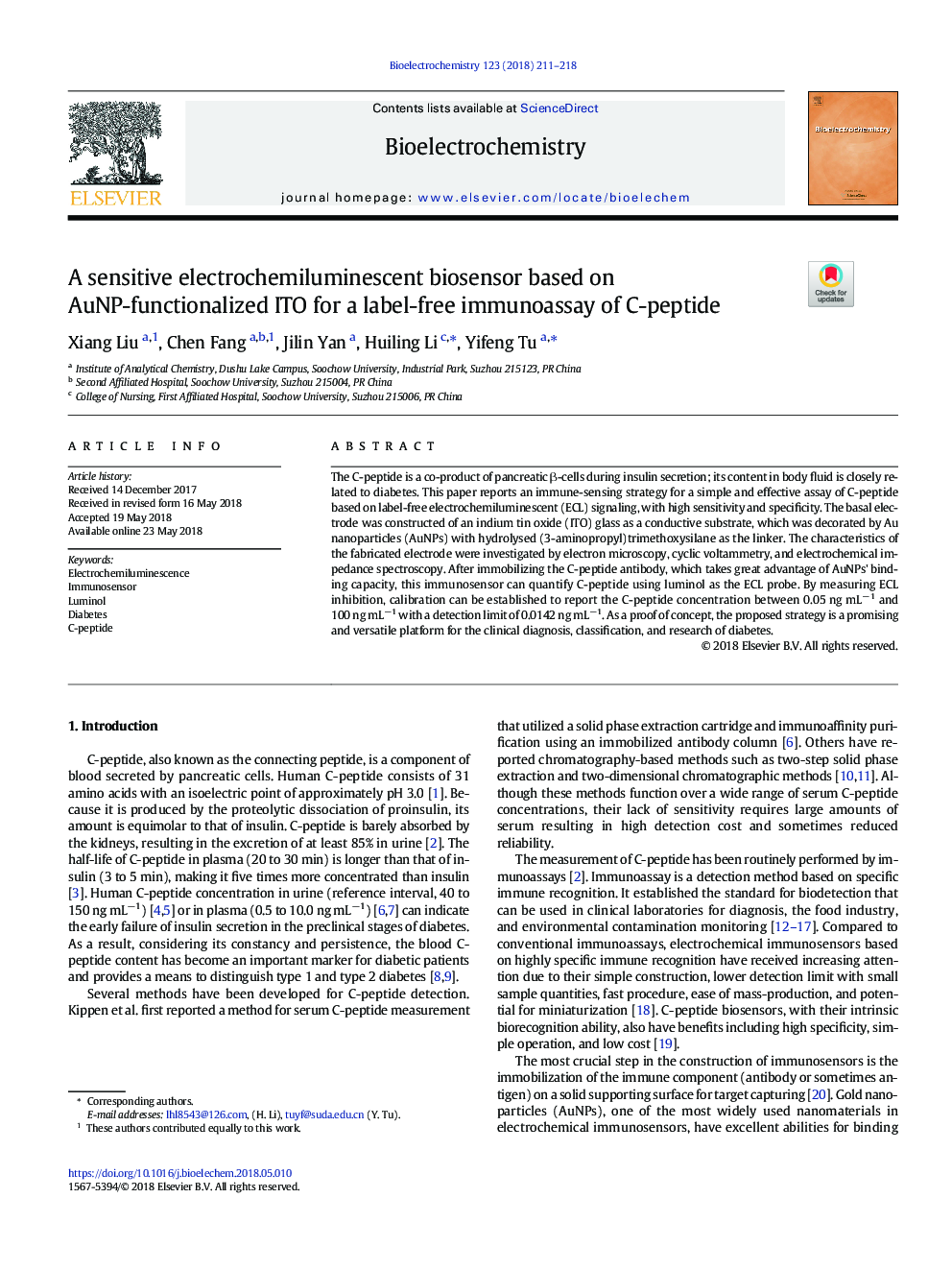| Article ID | Journal | Published Year | Pages | File Type |
|---|---|---|---|---|
| 7704400 | Bioelectrochemistry | 2018 | 8 Pages |
Abstract
The C-peptide is a co-product of pancreatic β-cells during insulin secretion; its content in body fluid is closely related to diabetes. This paper reports an immune-sensing strategy for a simple and effective assay of C-peptide based on label-free electrochemiluminescent (ECL) signaling, with high sensitivity and specificity. The basal electrode was constructed of an indium tin oxide (ITO) glass as a conductive substrate, which was decorated by Au nanoparticles (AuNPs) with hydrolysed (3-aminopropyl)trimethoxysilane as the linker. The characteristics of the fabricated electrode were investigated by electron microscopy, cyclic voltammetry, and electrochemical impedance spectroscopy. After immobilizing the C-peptide antibody, which takes great advantage of AuNPs' binding capacity, this immunosensor can quantify C-peptide using luminol as the ECL probe. By measuring ECL inhibition, calibration can be established to report the C-peptide concentration between 0.05â¯ngâ¯mLâ1 and 100â¯ngâ¯mLâ1 with a detection limit of 0.0142â¯ngâ¯mLâ1. As a proof of concept, the proposed strategy is a promising and versatile platform for the clinical diagnosis, classification, and research of diabetes.
Related Topics
Physical Sciences and Engineering
Chemistry
Electrochemistry
Authors
Xiang Liu, Chen Fang, Jilin Yan, Huiling Li, Yifeng Tu,
